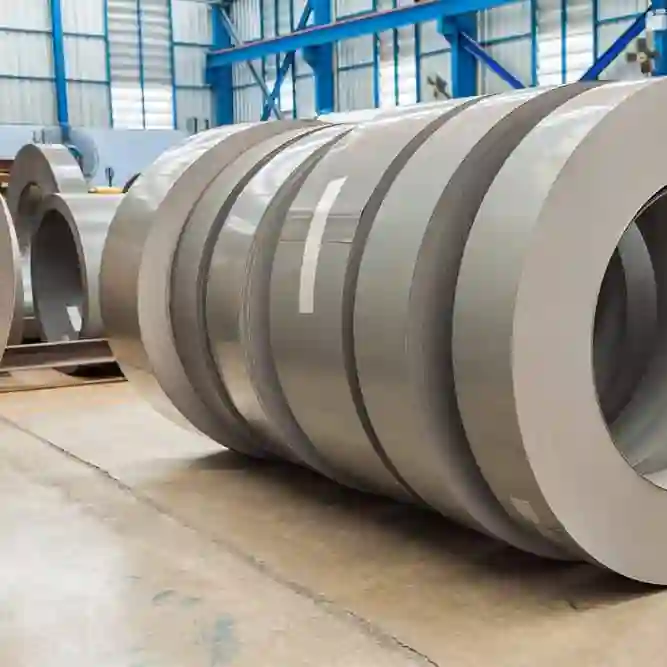Hebei Messi Biology Co., Ltd. stated that silicon steel grade magnesia is a kind of high-purity magnesia, and its purity requirement is ≥98%. It has good suspension performance in water and low hydration rate. In the process of producing oriented silicon steel sheets, silicon steel grade Magnesium oxide is coated between silicon steel sheets in the form of suspension, and forms a magnesium silicate insulating layer with silicate during high-temperature annealing, and plays the role of dephosphorization and desulfurization. my country is rich in magnesium resources, but there are few products with high added value. Therefore, the silicon steel grade magnesium oxide market needs to be further developed.
The name of silicon steel grade magnesium oxide actually indicates its use, which is suitable for making grain-oriented silicon steel sheets. In order to meet the requirements of the electrical and physical properties of the iron core, there is a high-temperature annealing process of 1200-1250 ° C for the silicon steel sheet during the production process of the grain-oriented silicon steel sheet. In order to achieve a regular orientation of the iron metal atoms during the annealing process, first, an excellent insulating film must be formed on the surface of the silicon steel sheet. This process must take 7 days to complete. In such a long high-temperature process Among them, silicon steel sheet will usually become iron tuo. It has been proved by scientific experiments that the function of magnesium oxide is firstly used as a high-temperature annealing barrier in the production of silicon steel sheet, and in addition, it has the function of forming an insulating coating of magnesium silicate glass body with silicon, and it can remove silicon steel in high temperature reaction. The role of impurities such as sulfur and phosphorus. However, not every kind of magnesium oxide can meet the needs of silicon steel production, and this kind of magnesium oxide should have its special quality.
This special quality mainly includes: high chemical purity, good suspension performance in water, low hydration rate, and certain activity of magnesium oxide. Magnesium oxide slurry has a stronger bondability to the surface of the silicon steel sheet. However, the current process for producing silicon steel grade magnesia is long, and the purity is not high, and the product quality is unstable, which cannot meet the requirements of the rapidly growing domestic production and development of oriented silicon steel sheets.
In order to solve the above-mentioned technical problems, prior art 1 discloses a process for preparing high-purity silicon steel grade magnesium oxide from magnesium hydroxide. In this process, magnesium hydroxide is lightly burned at 500-750°C, and then added to water. Raise the temperature to 73-98°C for hydration, then adjust the temperature to 60-80°C, and slowly add ammonium bicarbonate solution to the water for carbonization to obtain a suspension; filter the suspension, wash and dry the filtered residue, and then Calcined at 1050-1150°C to obtain high-purity silicon steel grade magnesium oxide. However, the disadvantage of the above-mentioned technology is that the process temperature and other parameters in the preparation can only be obtained on the basis of theory, and the intelligent control of the process parameters in actual production is poor, resulting in poor process stability.
Magnesium oxide particles are attracted to each other due to van der Waals force, and agglomerates will be formed. At the same time, magnesium oxide will produce a hydration reaction, thereby forming a certain amount of magnesium hydroxide on the surface of magnesium oxide particles, which increases the surface roughness of magnesium oxide particles and intensifies the agglomeration between particles. When there are too many magnesium oxide aggregates in the coating solution and the size of the aggregates is too large, a part of the magnesium oxide coated on the steel strip will still be in an aggregated state (the size is generally between 10 and 100 microns). And this kind of magnesia aggregate is not easy to dry thoroughly after being coated on the steel strip, and there is moisture residue inside the aggregate. During the high-temperature annealing stage, the moisture in the agglomerates will not be discharged smoothly, which will cause the surface of the micro-zone steel strip to be over-oxidized, thereby forming point-like gold leakage defects. At the same time, when the moisture in the aggregate expands under high temperature, it will cause plastic deformation in the micro-area of the steel strip, which will be inherited into the finished silicon steel product, forming pitting or indentation defects, which will seriously affect the surface quality of the product and affect the stacking coefficient. In short, the defect of the prior art is that the increase of impurities cannot be effectively avoided. The purity is not high, the product quality is unstable, and it cannot meet the requirements of the production and development of various grain-oriented silicon steel sheets. Moreover, there are disadvantages such as high energy consumption and high production cost in the prior art.

